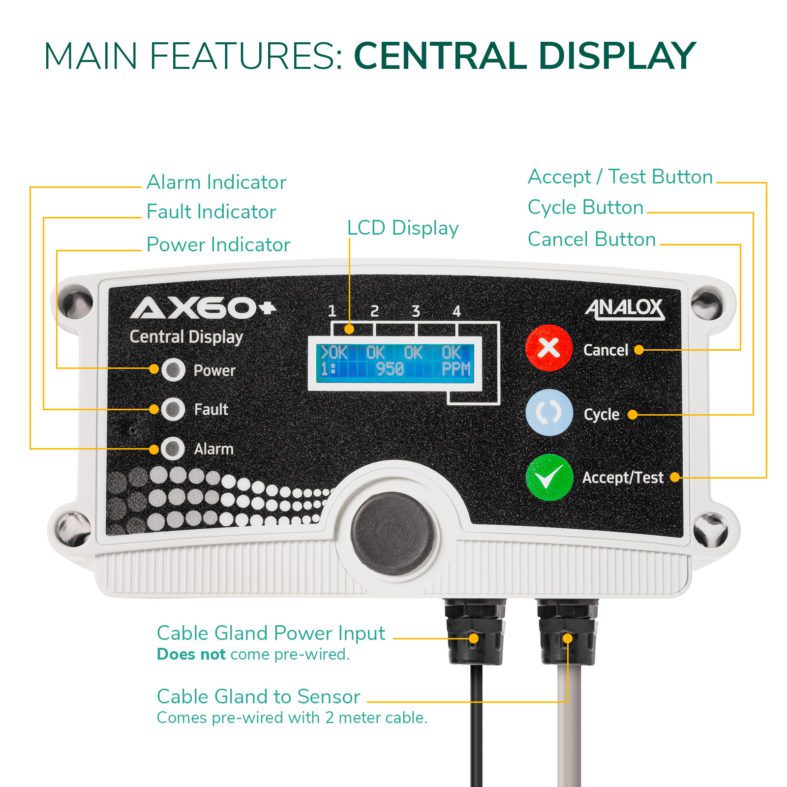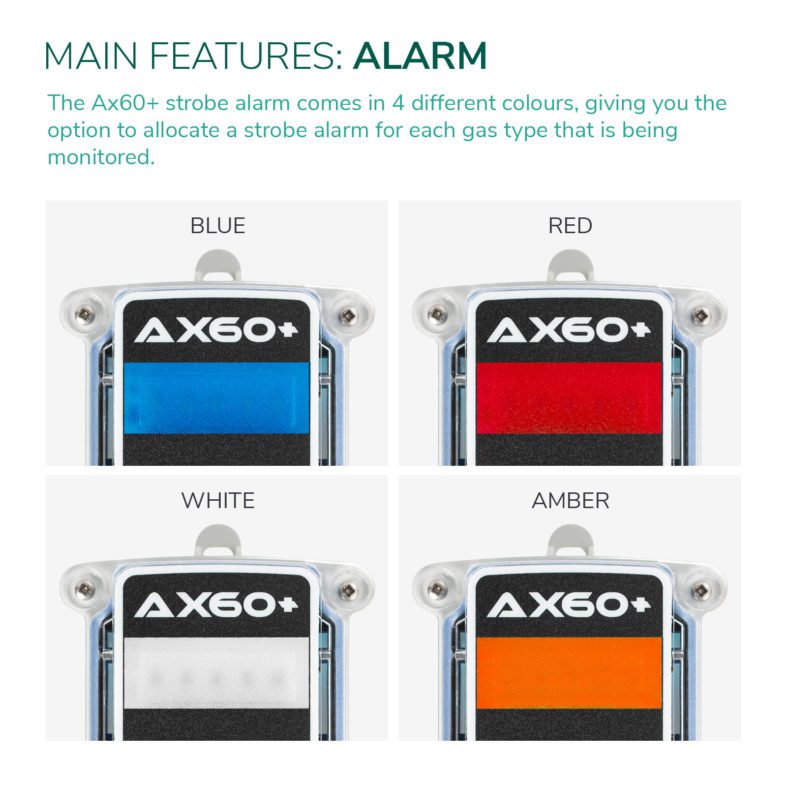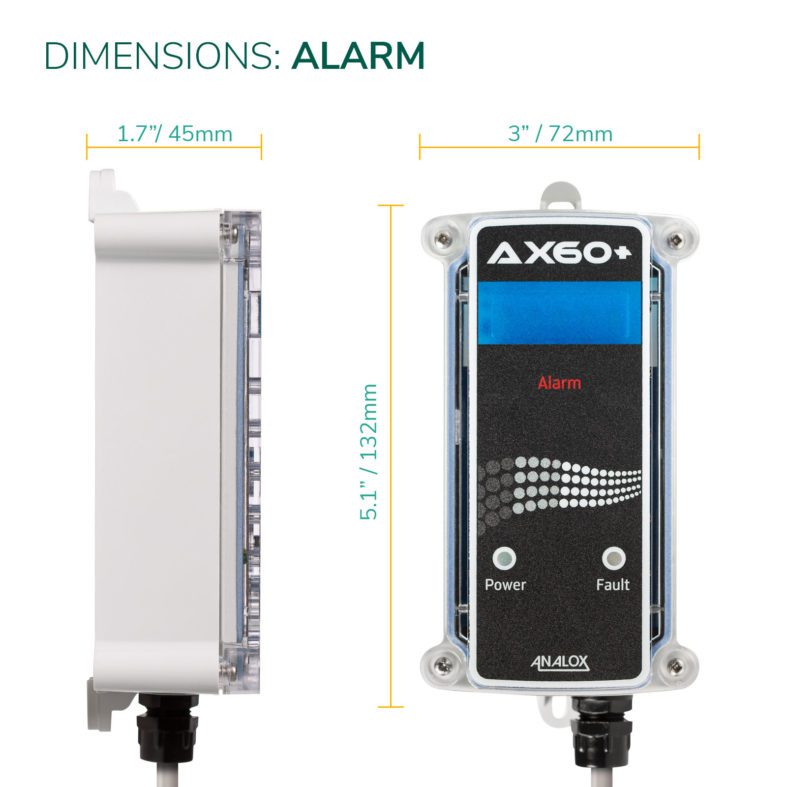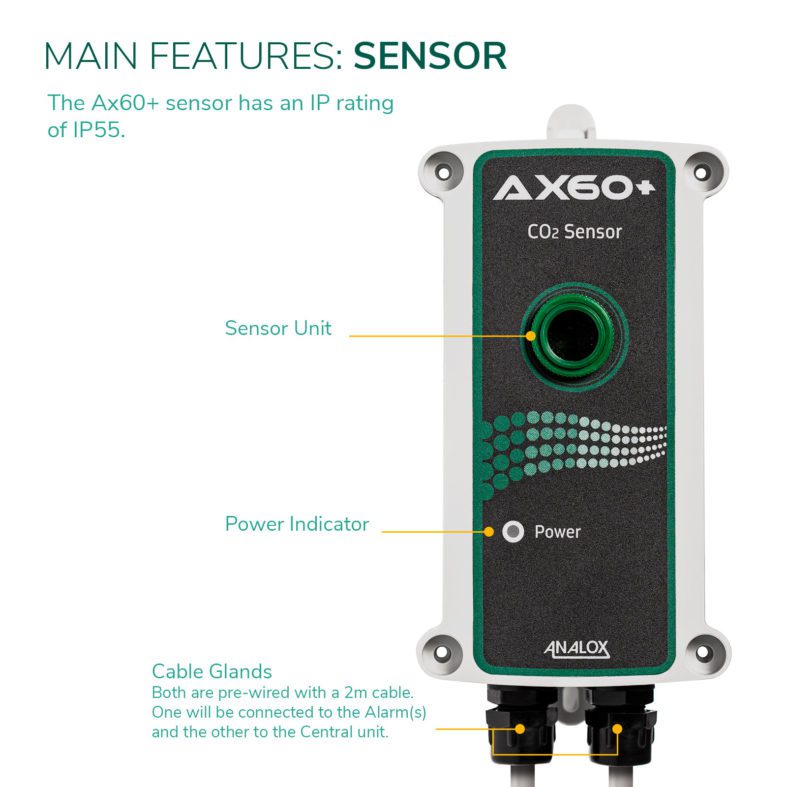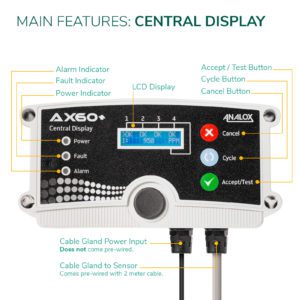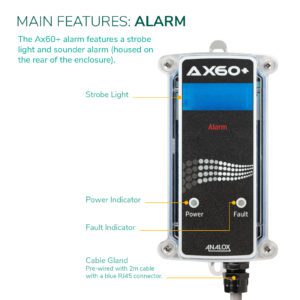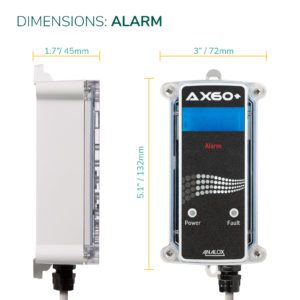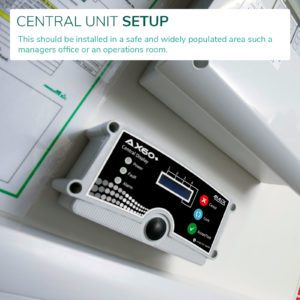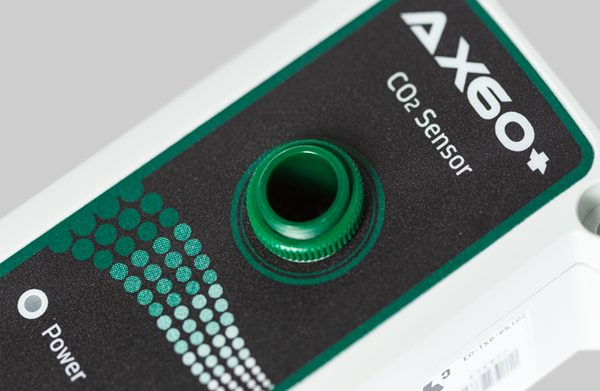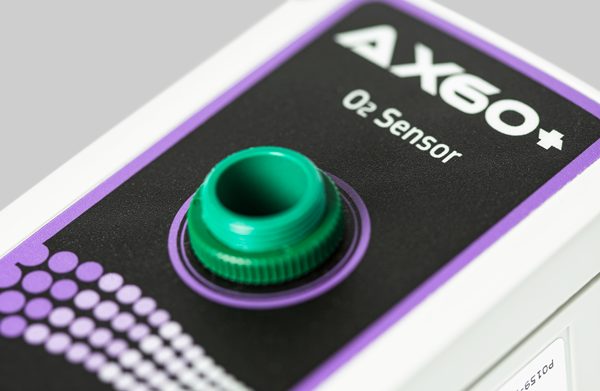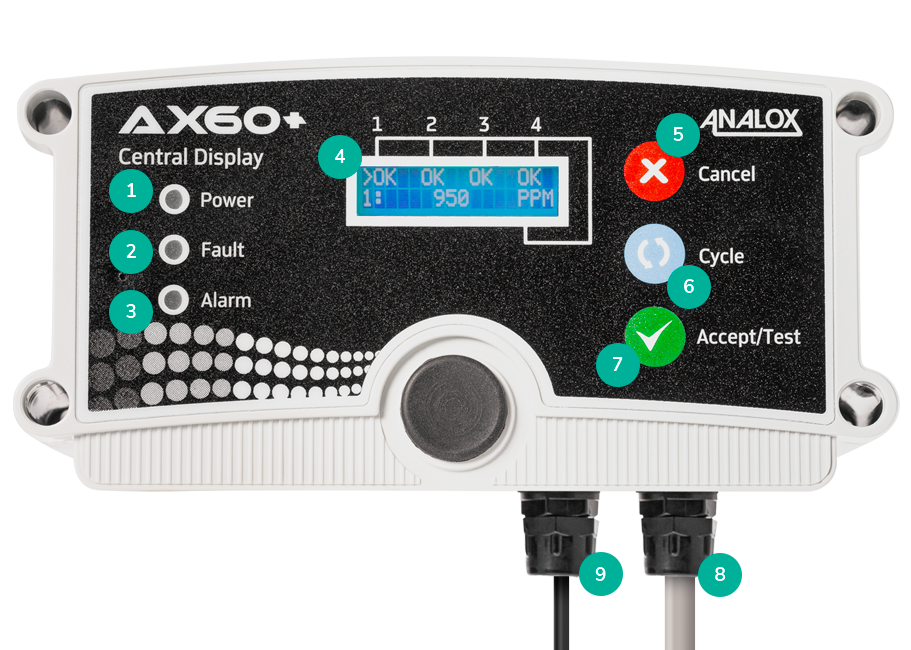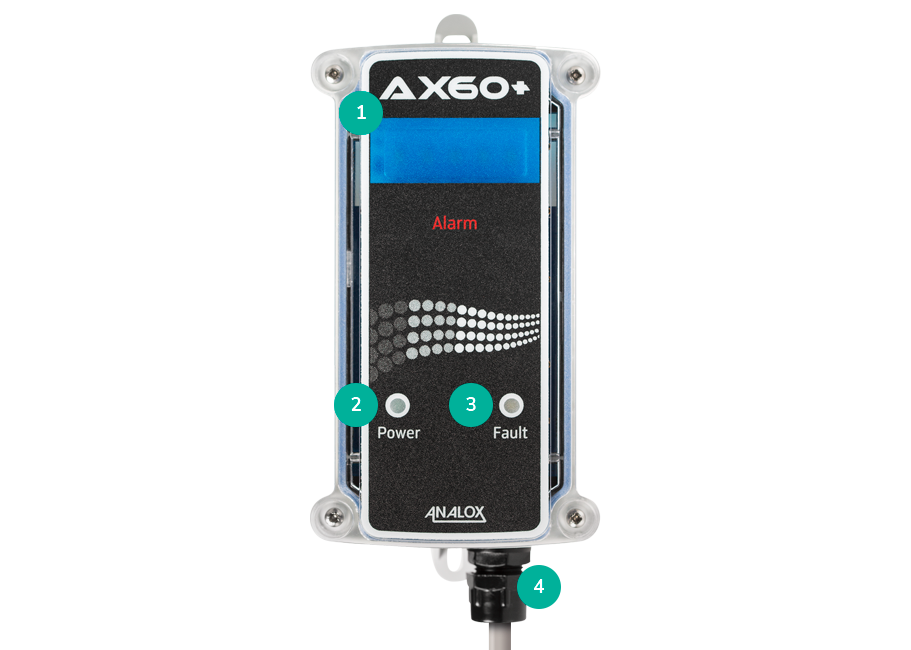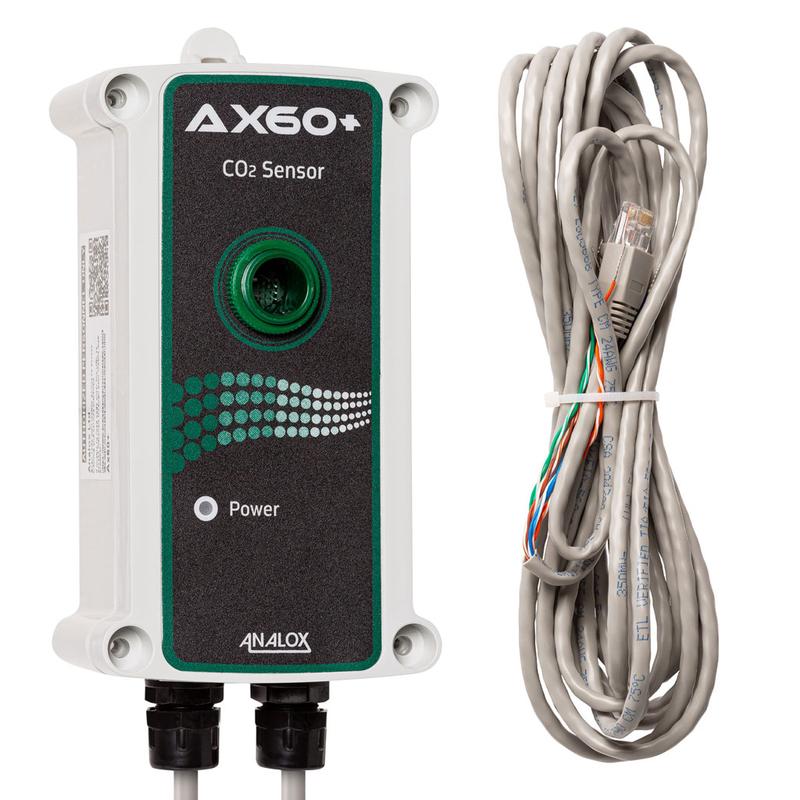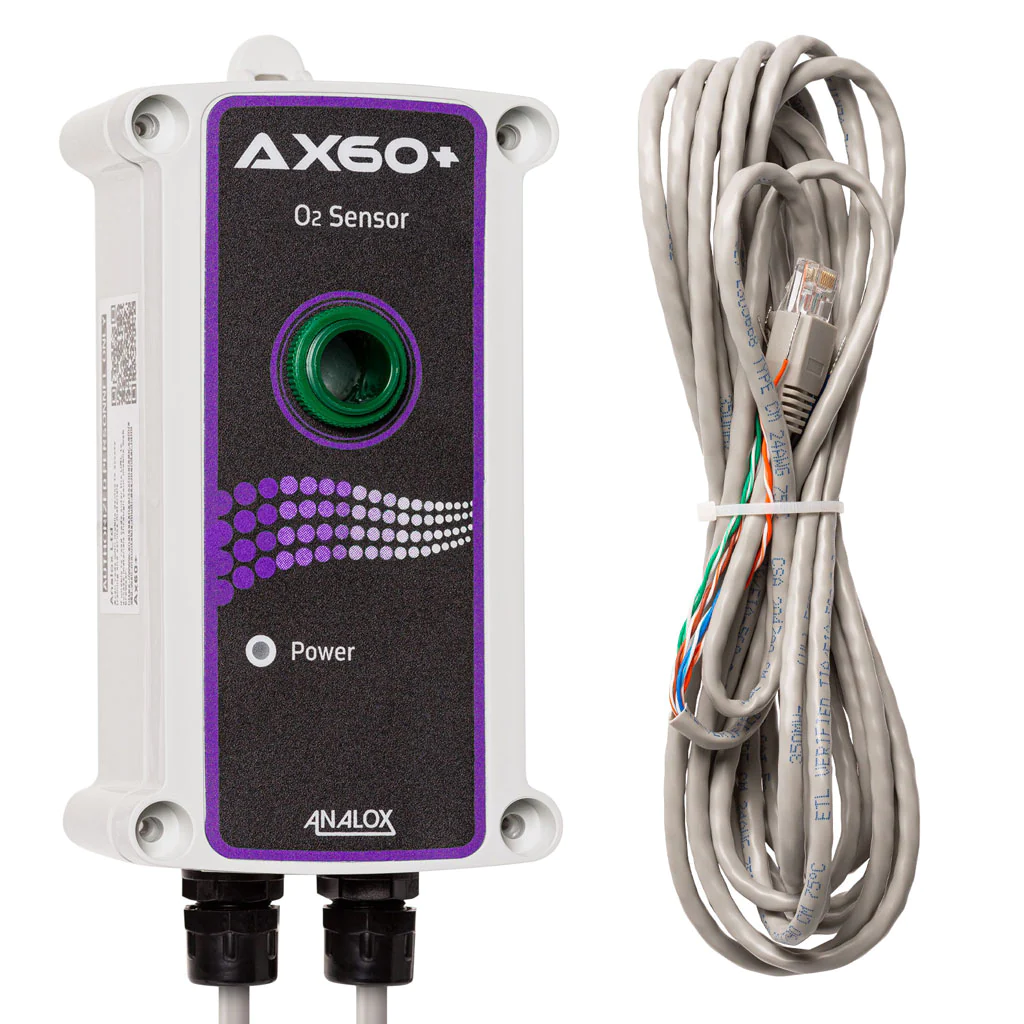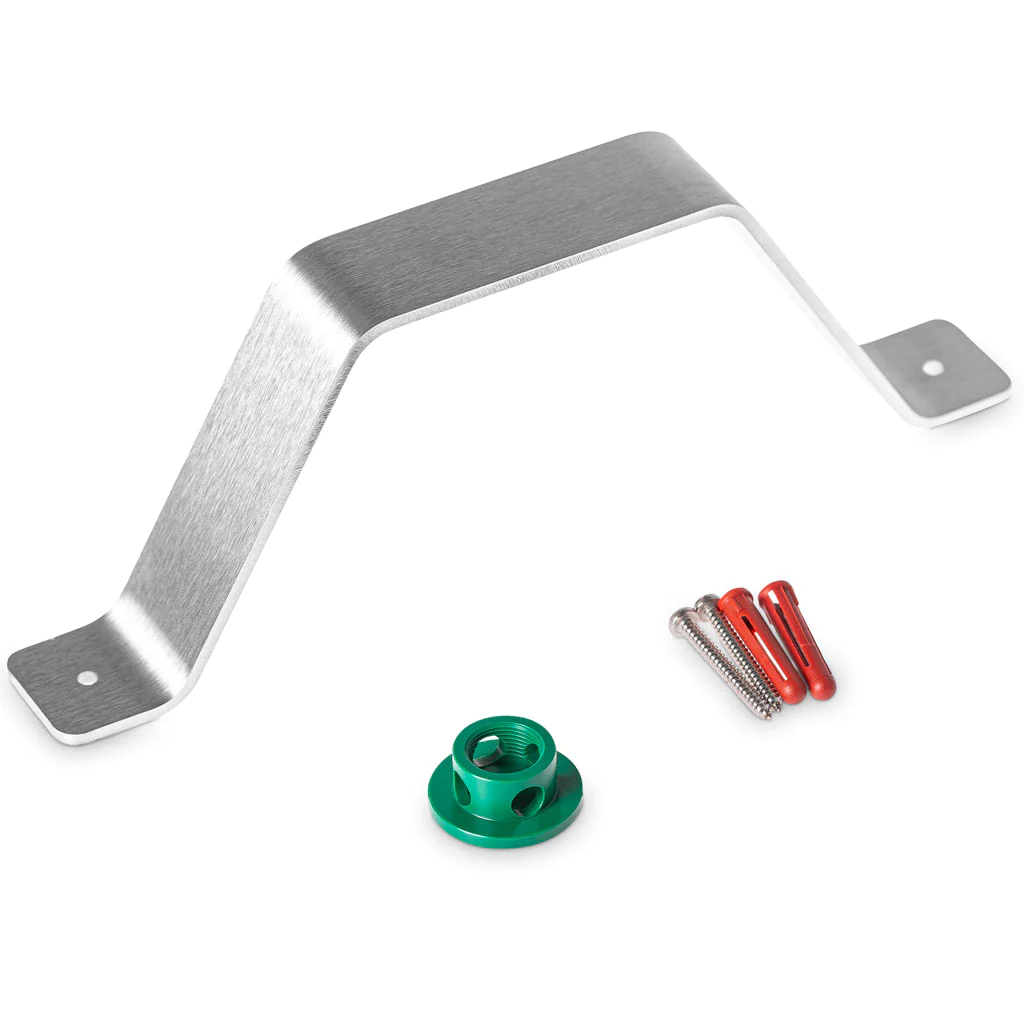Ax60+
MULTI-GAS MONITORING SAFETY SYSTEM
If you need a simple, ready to install and cost-effective gas safety monitor – we’ve got you covered. The Ax60+ is easy to install and already programmed for your local regulations.
Simple. Reliable. Easy to Install. Those words are frequently mentioned by facility managers, safety engineers, and key decision makers when talking about the Analox Ax60+ Multi-Gas Analyzer.
Key Features
- Central unit with a hi-res digital display
- Choice of 1 - 4 sensors
- Choose the number of alarm units (up to 4 per sensor, system maximum 8 alarm units)
- Choose any combinations of gases – Carbon dioxide (CO2) or oxygen (O2)
- 2 In-built relays
- Audible & Visual alarms
- Time weighted average (TWA) alarm
- Quick connect or direct connect installation options
- 5 year electronics warranty
- 5 year carbon dioxide (CO2) sensor warranty
- Graded 5 year oxygen (O2) sensor warranty
Industries who use the Ax60+ for CO2, O2 and inert gas safety

HOSPITALITY
Pubs, Bars, Restaurants, Fast Food Establishments

MEDICAL
Hospitals, Clinics
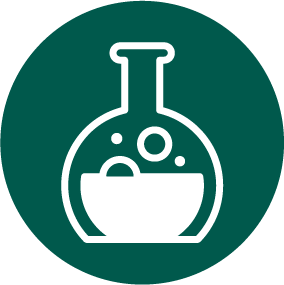
LABORATORY
Research Labs, University Labs, Medical Labs

OIL & GAS
Gas Manufacturing & Blending

BEVERAGE
Breweries, Wineries, Dispense

AGRICULTURE
Vertical Farming, Greenhouses, Indoor Farms, Indoor Cannabis Farms, Plant Nurseries

CONSTRUCTION
Fire Suppression CO2 safety

GREEN SECTOR
Green Energy

EDUCATION
Schools, Colleges, Universities, Academic Facilities
Introducing the Ax60+ Cultivate: Your Essential CO2 Safety Sensor for Indoor Agriculture
If you’re seeking a specialized CO2 safety sensor for indoor agriculture, encompassing vertical farming, greenhouses, indoor farms, indoor cannabis farms, and plant nurseries, our latest sensor solution, the Ax60+ Cultivate, is tailored for your needs.
Explore our new sensor by clicking the ‘Learn More’ button below.
CO2 monitoring & O2 monitoring with the AX60+
Each Ax60+ unit is scalable to meet the specific needs of the customer. Up to four analyzing sensors can be networked with the central monitoring station. The units can monitor for O2, CO2 or a combination of both gasses providing the flexibility most establishments need. Each sensor can handle up to four alarm units which respond with audible and visual indicators when the alarm setting is triggered.
Take a closer look
Ax60+ Legislation
Analox engineers and product designers developed the Ax60+ to meet the diverse safety needs and regulatory requirements mandated by local, state and federal authorities. In the United States, the Ax60+ has been pre-programmed to meet USA regulations with system alarm setpoints for OSHA, NBIC, NFPA and IFC standards. In Europe, the Ax60+ setpoints utilize the EH40 standard. The Ax60+ is also certified by UL.
If you have any other legislation requirements that you wish to discuss, please give us a call.
Modular System to Suit Your Needs
The Ax60+ system is engineered for flexibility, providing a spectrum of customization options. This encompasses the arrangement of up to four sensor units, spanning the CO2, O2, and Cultivate CO2 sensors. Each individual sensor can accommodate up to 4 alarm units, culminating in a maximum of 8 alarm units per system. For instance, if all 4 sensors are operational, each sensor could host 2 alarm units, summing up to a total of 8 alarm units for comprehensive coverage.
CO2 Calculator
There is a common misconception that if using carbon dioxide (CO2) in your facility you can stay safe by using an oxygen (O2) monitor.
The team here at Analox want to dispel this myth so we can ensure you and your team stay safe when using and storing CO2.
CO2 is a toxic gas meaning that even at relatively low levels it can have dangerous effects on the human body. In the event of a CO2 leak, the CO2 will begin to displace the O2 in the area, however, O2 sensors typically have alarm levels set at around 19.5% and 18% so by the time the CO2 has displaced enough oxygen to trigger these alarm levels the CO2 levels will be dangerously high.
If using CO2, your safety monitor must be a CO2 monitor, this is critical so you are alerted to any leaks at levels which still give you time to take action to keep everyone safe. This also helps to save you money as leaks can be addressed early and in the current times of CO2 shortages, protecting this precious resource is key to any business.
We’ve made this calculator so you can check the resultant O2 levels when the ambient CO2 level changes.
SLOT Specified level of toxicity (1 - 5% of fatalities) SLOD Significant likelihood of death (50% fatalities)
Remember: You CANNOT use an O2 sensor to measure CO2 levels. CO2 levels become hazardous to life long before the CO2 displaces enough O2 for it to trigger an O2 alarm.
Ax60+ Annual Proof Test
Technical Specification
Optional Extras & Accessories
View all Ax60+ Optional Extras & Accessories
Its flexibility is what makes it such a good product as it can suit a wide range of requirements each customer may present. There are a multitude of sensors, alarms and strobes you can attach to one CDU (central display unit). Included in this expansive set up choices are optional add ons, such as a beacon, a Kiosk set up and a DOM (Data output module).
Case Studies, Articles and Blogs
Blog - How to calibrate your Ax60+ CO2 monitor
Read MoreBlog - is there CO2 in my cheese?
Read MoreGasworld Article: 10 minutes with Scott Clarkson
Read MoreBlog - Empty Shelves and Rising Food Prices
Read MoreBlog - Can I measure a CO2 leak using an O2 monitor?
Read MoreGasworld Article: Devices to keep you ice and safe!
Read MoreSubscribe to our Analox Newsletter!
Gain exclusive access to the latest news, insights, upcoming product releases in gas safety and efficiency. Be the first to know about our innovative solutions, upcoming events, and expert perspectives. Sign up today!

